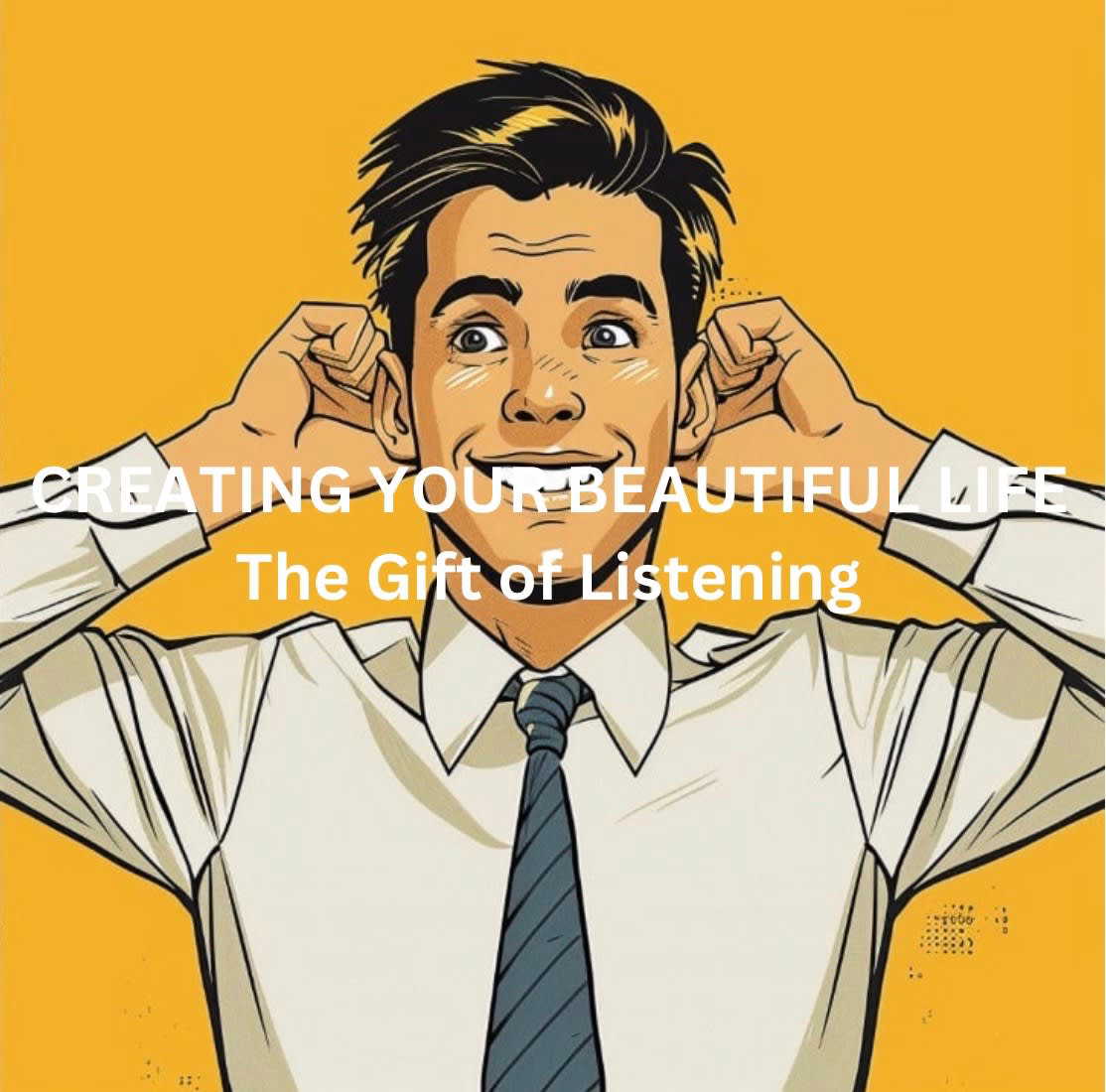There are certain summers that stick with you—not because everything went smoothly, but because life had a way of handing you exactly the lessons you needed. My internship in the state of Washington, the summer of 1980, was one of those. Back then, I was a junior at Iowa State, trying to line up all the things I thought would guarantee a good job after graduation: solid grades, some campus involvement, and most importantly, that golden ticket on any engineering résumé—an internship in your field. So I spent the spring sending out application after application, collecting a thick stack of rejection letters in return. It became routine enough that some days I’d find myself laughing at how efficiently companies could say “No thanks.” My dorm room wall was full of “flush letters” and I treated it like it was a badge of honor.
Creating Your Beautiful Life
The Gift of Listening
Creating Your Beautiful Life
The Gift of Listening

In a world filled with constant noise and distractions, the gift of listening often gets lost in the shuffle. Yet, it’s one of the most powerful tools we have for fostering deep connections and nurturing healthy relationships. Listening goes beyond merely hearing words; it involves fully engaging with the speaker, understanding their perspective, and empathizing with their feelings. Let’s delve into why the gift of listening is essential and how it can transform relationships for the better.
First and foremost, active listening demonstrates respect and genuine interest in the other person. When we give our undivided attention to someone, we signal that their thoughts and emotions matter to us. This validation creates a safe space for open communication and strengthens the bond between individuals. Whether it’s a partner, friend, family member, or colleague, feeling heard and understood is fundamental to building trust and intimacy.
Moreover, active listening fosters empathy and compassion. By actively tuning in to the speaker’s words, tone, and body language, we gain insight into their experiences and emotions. This deeper understanding allows us to respond with empathy, offering support and validation. In turn, this empathetic connection deepens the relationship and cultivates a sense of belonging and mutual care.
Another significant benefit of active listening is its role in conflict resolution. When conflicts arise in relationships, communication breakdowns often exacerbate the situation. However, by practicing active listening, we can de-escalate tensions and work towards mutually satisfactory solutions. By truly understanding each other’s perspectives and concerns, conflicts become opportunities for growth and compromise rather than sources of resentment and misunderstanding.
Furthermore, active listening promotes effective problem-solving. By fully engaging with the speaker’s thoughts and ideas, we can collaboratively explore solutions and brainstorm alternatives. This collaborative approach not only strengthens the relationship but also fosters a sense of teamwork and mutual respect.
In romantic relationships, active listening is particularly crucial. Partners who actively listen to each other’s needs, desires, and concerns build a strong foundation of trust and intimacy. By prioritizing open communication and empathy, couples can navigate challenges together and grow stronger as a unit. Active listening also helps prevent misunderstandings and promotes emotional intimacy, enhancing the overall quality of the relationship.
Let’s embrace the gift of listening to nurture thriving relationships built on trust, empathy, and love.
Pamela is a faith-based life coach. She leads a holistic life transformation program for incarcerated women. She is an artist, speaker, wife, mother, friend, and lover of the environment.
Leave a Comment 👋
Leave a Comment 👋
Leave a Comment 👋
Leave a Comment 👋

Long Lake Summers
There are seasons in life you don’t see coming—chapters that don’t announce themselves with fanfare, yet settle so deeply into your memory that years later you can still smell the lake water, feel the pull of the tow rope, and hear the hum of a boat engine echoing across a still summer evening. For me, one of those chapters began the moment I graduated from Iowa State in May of 1981 and took my first real job at 3M. I was barely 22, carrying that mix of confidence and cluelessness that only a new graduate can pull off, and ready to step into the adult world.

Hero of the Beach
When I think back to my childhood— maybe around nine years old—there’s a very specific smell, a very specific feeling, that comes rushing back: the scent of ink and old paper from a stack of Marvel comic books. It’s funny how memory works. I can’t remember what I ate last Tuesday, but I can still picture—clear as day—the cover of The Amazing Spider-Man #56 with the Daily Bugle headlines screaming "Spidey joins Doc Ock" sitting on the floor of my bedroom, or the way the corner store rack looked when I spun it, hoping for a new issue of anything with the red-and-blue web-slinger on the front.
